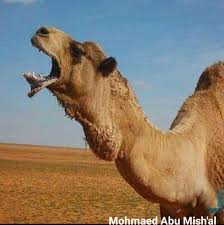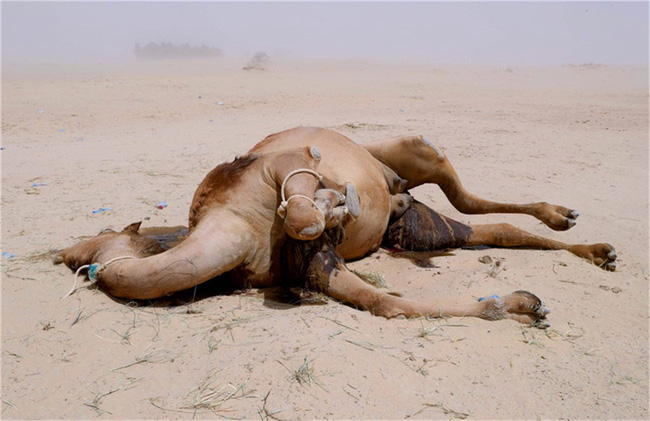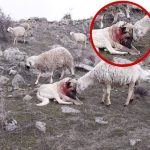The Desert’s Silent Scream
- MinhKhue
- August 7, 2025

The setting sun painted the endless sand dunes in hues of crimson and gold, but for one lonely figure, the desert held no beauty. The vast, empty landscape, usually so silent, was filled with a sound that tore at the very fabric of existence: the raw, gut-wrenching cry of a mother’s grief.
 Zahara, a mother camel with eyes as ancient as the dunes themselves, stood over the still body of her baby. Her head was thrown back, her mouth wide in a silent scream that the wind carried far and wide. It was a cry not of a mere animal, but of a broken heart. The tiny, lifeless form at her feet, once a source of warmth and hope, was now just a silent witness to her despair.
Zahara, a mother camel with eyes as ancient as the dunes themselves, stood over the still body of her baby. Her head was thrown back, her mouth wide in a silent scream that the wind carried far and wide. It was a cry not of a mere animal, but of a broken heart. The tiny, lifeless form at her feet, once a source of warmth and hope, was now just a silent witness to her despair.
 Animals feel. They grieve. They love deeply and mourn fiercely. Zahara’s life had been one of endurance, of surviving the brutal heat and the bitter cold, of finding water where there was none. But nothing had prepared her for this. The pain was a physical weight, a crushing force that made the very ground beneath her feel unstable.
Animals feel. They grieve. They love deeply and mourn fiercely. Zahara’s life had been one of endurance, of surviving the brutal heat and the bitter cold, of finding water where there was none. But nothing had prepared her for this. The pain was a physical weight, a crushing force that made the very ground beneath her feel unstable.
She nudged the little body with her nose, as if a gentle touch could bring life back, as if her love could reverse the finality of death. She lingered there for hours, a silhouette against the fading light, refusing to leave. She remembered the day her baby was born, a wobbly, precious creature who had looked at her with trusting eyes. She had taught him to walk, to find shade, to drink from the precious, life-giving water holes. Now, the lessons were over.
 The desert, which had always been a place of survival, had become a tomb. Zahara’s mournful cry was a reminder that love knows no species, and pain knows no language. Her grief was a universal truth, a heartbreaking testament to the deep, complex emotions that lie within all living beings.
The desert, which had always been a place of survival, had become a tomb. Zahara’s mournful cry was a reminder that love knows no species, and pain knows no language. Her grief was a universal truth, a heartbreaking testament to the deep, complex emotions that lie within all living beings.
As night fell and the stars began to pierce the velvet blackness, Zahara finally lay down beside her baby. She rested her head close to his, her body trembling not from cold, but from sorrow. She had nothing left to give, yet her love remained. This haunting image, a mother’s grief in the face of nature’s indifference, was a powerful plea for kindness—a reminder that all beings, great and small, share the capacity to love and to lose.











